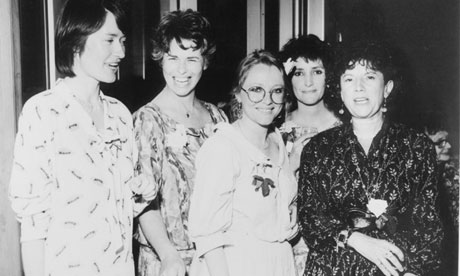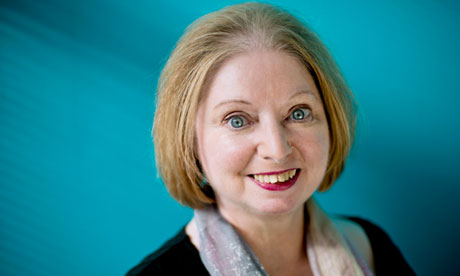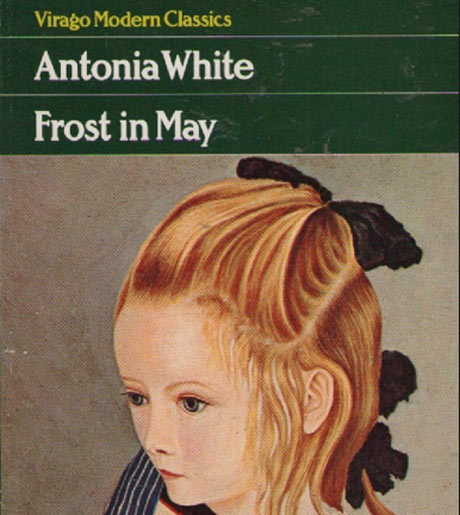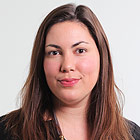
The key team at Virago Books in 1988 (from left): Harriet Spicer, Ursula Owen, Lennie Goodings, Alexandra Pringle and Carmen Callil. Photograph: Susan Greenhill
In 1973, Carmen Callil started a publishing company with one key aim: to make women's writing central. Callil had grown up in Melbourne in Australia, then spent her 20s in London, part of a generation who felt the world was their oyster, she tells me, as we sit in her colourful living room, her border terrier snoring softly at our feet. She worked on the underground press, providing publicity for Ink magazine (company motto: "anything outrageous suitably publicised") and became friends with Marsha Rowe and Rosie Boycott, who started the feminist magazine Spare Rib in 1972. That title gave Callil the idea of doing the same thing for books. A new publishing company began at her kitchen table, and its name was coined, she says, when she and Boycott, "were sitting on the floor of my flat, going through a book of goddesses. Rosie came acrossVirago: 'a war-like woman', and I said: 'That's fine! I love it.'"
Ursula Owen and Harriet Spicer helped found the company, and it quickly became successful – in 1978, it launched the hugely influential Modern Classics series, with their distinctive green spines, celebrating and reviving the work of hundreds of female writers. It still thrives today, headed by Lennie Goodings, as an imprint of Little, Brown and last weekend celebrated the upcoming launch of Fifty Shades of Feminism, an anthology featuring essays from writers including Tahmima Anam, Xinran, Ahdaf Soueif and Bidisha.
Virago wasn't the only feminist publishing house to start in that era. It was part of a movement that began tentatively in the 1960s and burgeoned over the next two decades. Ambitions varied from publisher to publisher, but included a conviction that women's writing should be taken as seriously as men's, and, as a result, should have the same chance of remaining in print and becoming part of the canon. There was a strong interest in promoting the work of women who might otherwise be ignored; those marginalised by race, class, sexuality and disability, as well as sex. In the UK, Onlywomen Press specialised in lesbian writing, and Shebashowcased black, working-class and lesbian writers.
There was an obvious drive to publish feminist nonfiction too, whether polemic or memoir, books that could explore and define the female experience. Philippa Brewster, now a literary agent at Capel & Land, came up with the idea for feminist imprint Pandora Press and one of its first books was written by the women of Greenham Common. "That seemed to fulfill what we really wanted to do," she says. "We were all part of the women's movement. We represented it, but we also informed it." By 1988 there were 11 feminist publishing houses in the UK.
Many of those have now either scaled back operations or closed, but the publishing landscape looks very different to when they first started. As Callil points out, although there have always been many women in publishing, it is only more recently that they have tended to head companies and wield serious power. The question is whether the movement succeeded beyond that. Forty years since it first started, are female writers taken as seriously in the literary world as their male counterparts and given an equal shot at longevity?
There have been some recent signs it succeeded royally, not least from a glance at UK literary prizes. This year alone, Sharon Olds has won the TS Eliot prize for poetry and women won in all five categories of the Costa prize, with Hilary Mantel as the overall winner – following her secondBooker win late last year. Twenty years ago, an all-female shortlist for a literary prize was pretty much unheard of; in fact, it was an all-male Booker shortlist in 1991 that launched a lively conversation among publishers and writers and led to the 1996 formation of the Orange prize.
That award is now known as the Women's Prize for Fiction (the Orange sponsorship has ended), and yesterday announced a strong longlist for 2013, including Zadie Smith, Elif Shafak, Barbara Kingsolver, Gillian Flynn, Kate Atkinson and, inevitably, Mantel. The prize's co-founder Kate Mosse says she sees the current era as a good one for female writers. It's important for the prize to continue, to retain the territory it has won, she says, but "in this country I think the issue at the moment is to do with access to publishing from other voices. So we see the library service being chiselled away, a complete lack of understanding of what that means to communities where there isn't an immediate access to books … those spaces where anybody, whoever they are, might discover reading, discover the ability to write. I think those are much bigger issues at the moment than whether you're a man or a woman."
 Hilary Mantel… leading the current surge of strong women writers. Photograph: Sarah Lee for the Guardian
Hilary Mantel… leading the current surge of strong women writers. Photograph: Sarah Lee for the Guardian
There is certainly strong evidence that publishing remains dominated by a narrow, privileged few. Last year, for instance, the US writer Roxane Gayhighlighted the problem of access for black writers by analysing the booksreviewed in the New York Times over the course of 2011. Of 742 books, 655 (nearly 90%) were written by white authors. "That is not even remotely reflective of the racial make up of [the US], where 72% of the population, according to the 2010 census, is white," she noted.
Gay's survey followed the work of the group Vida: Women in Literary Arts, which has been publishing an annual count of women's representation in literary journals for three years. Its most recent count came out last week – not one of the literary publications it analysed reviewed more books by female authors than male authors. The Boston Review came very close to equality, with 52% by male authors, 48% by female authors, but in most other cases there was a gaping disparity. In Harper's Magazine, 83% of the books reviewed were by male authors, 17% by female authors; in the London Review of Books, 73% by men, 27% by women; in The New York Review of Books 78% by men, 22% by women; and in the TLS, 75% by men and 25% by women.
It has been suggested this disparity might be because women publish fewer works of serious fiction and nonfiction than men. The numbers regarding authorship are difficult to pin down, because publishing includes such a mix of genres and styles, commercial and literary. But a small US survey by the writer Ruth Franklin, who looked at 13 publishers – focusing on the books that might plausibly be reviewed – did find female authors represented far less often. Only the Penguin imprint Riverhead approached parity, with 55% of its books by men and 45% by women. For Verso and Dalkey Archive Press, only 11% and 10% of their books were by women, respectively.
This shortfall seems relatively baffling when you consider women's interest in literature. When Debbie Taylor was setting up the women's writing magazine Mslexia in the late 90s, she uncovered figures that showed women were much more highly represented on writing courses than men, more likely to rate reading as important, and both bought and read double the number of books than men did each year.
There's no reason to suspect those figures have changed considerably, but male disinterest in women's writing could provide one clue to low representation of women, both on literary shelves and review pages. In 2005-6, UK academics Lisa Jardine and Annie Watkins asked men and women about the books they had found formative; the women's top 20 included six male authors. The men's top 20 included one female author, Harper Lee, leading Jardine and Watkins to remark: "Is it churlish of us to suspect that some men did not realise that Harper was a woman?" They also asked men and women about the last novel they had read; four out of five men said it had been by a male author, whereas women were nearly as likely to have read a book by a male author as a female one. If women are interested in literary fiction by men and women, and men only in literary fiction by men, then perhaps it's not surprising that more male authors might be reviewed and published.
Taylor suspects that women still feel that the literary world, if not exactly hostile, is unwelcoming – not surprising, given women's low representation. The fewer women whose work is being published and celebrated, the fewer are likely to feel their work will be valued. She has spoken to publishers and agents who say they receive far fewer submissions from women; one of the aims of Mslexia is to provide a place where women feel confident submitting their work. A recent novel competition they ran had 2,000 entries, and of the 100 that were shortlisted – all accomplished pieces of work, says Taylor – 39 had never been submitted anywhere else.
There is a way for female writers to be taken more seriously. Taylor points out that of the last 10 books to win the Booker prize, eight had male protagonists, one a female protagonist, and one both male and female protagonists. If a woman adopts a male perspective, it seems their story is still more likely to be respected, and read as universal. The authorNaomi Alderman is well aware of this bias, and notes that the women who have won the Booker include: "Hilary Mantel writing about a strong man [Thomas Cromwell]. Pat Barker writing about the first world war and men's experiences. AS Byatt, yes there's a woman in it, but actually a lot of Possession is first-person writing as a man. Let's look at their names: Hilary, Pat and AS. These are names a man can read on the train and you don't necessarily immediately know that they're reading [a book by] a woman."
Erin Belieu, a poet and co-founder of Vida, says that among her writer friends, "it's amazing how much women fret over their subjects. The most anxiety-producing – the worst – being whether or not you mention children." There's a fear that this would be career suicide, she says.
 Frost in May by Antonia White – one of the early Virago Modern Classics. Photograph: .
Frost in May by Antonia White – one of the early Virago Modern Classics. Photograph: .
Taylor has written about the idea that a masculine aesthetic, developed over centuries, continues to define excellence in literature. "Historically men have been in charge of publishing and reviewing," she says, "and so that gets into people's psyche. If it's good it has to be emotionally distant, technically sophisticated and factually informative. But also, crucially, with a male gaze, a male point of view."
The trouble is, even when female authors adopt a male perspective, along with subject matter that strictly accords to the masculine aesthetic, there is a fair chance they will be packaged frothily, the content of their work undermined by its cover. Alderman writes about this in her essay in Fifty Shades of Feminism. "Not having decided early on to call myself NA Alderman," she writes, "I have to have girly jackets featuring women gazing wistfully at summer meadows. Even when the novel in question is mostly concerned with a relationship between two gay men."
This was illustrated by the recent furore over the cover of a new edition ofThe Bell Jar, which illustrates Sylvia Plath's fictional study of depression with a woman re-touching her makeup. In her essay, Alderman writes powerfully about how it is easier for her, in some ways, to operate in the world of video games, where she also works as a writer and where women are in such a minority that once they have muscled their way in, they are treated as honorary men. In publishing, where women have gained a certain amount of power, they are now in the "special girls' holding pen", she writes, easily marginalised as a group, while waiting for full equality.
That is not just true for female authors, of course. And the digital era has brought new issues, especially for young women. One of the areas that women's publishing houses particularly championed, feminist nonfiction, is thriving and seems to be tapping directly into this mood of uncertainty. Some of the strong, serious polemic of the 70s is gone, replaced by books aimed at young women, often funny and featuring nods to self-help. They include Caitlin Moran's How To Be a Woman, the upcoming book from Lena Dunham (apparently based loosely on Helen Gurley Brown's 80s self-help tome, Having It All) and Sheila Heti's How Should A Person Be? – a novel with shades of nonfiction that explores whether a woman can be a genius, and has just been longlisted for the Women's Prize.
The imprint Square Peg is due to publish a book by Rhiannon Lucy Cosslett and Holly Baxter, the young writers who run the feminist websiteThe Vagenda. There are also new waves of feminist work coming to the fore globally. Brewster runs a list at the publisher IB Tauris, and says she is excited by the writing emerging from the Middle East, India and Africa, which blends ideas from feminist activism and academe.
The influence of the feminist publishing movement can be seen far and wide. It's there in the enormous power of women in publishing today and in the ongoing insistence that women's voices should be taken seriously, that if literature is important – if it both shapes and reflects our lives – it should represent something beyond a narrow corner of the world. And it is there in every story where women's lives are central, in mediums well beyond the book world. For instance, Callil says, she is madly in love with the Danish TV show Borgen, which centres on a female prime minister. "Borgen is a Virago modern classic times 500," she says. "It's human life, and it's wonderful."

No comments:
Post a Comment